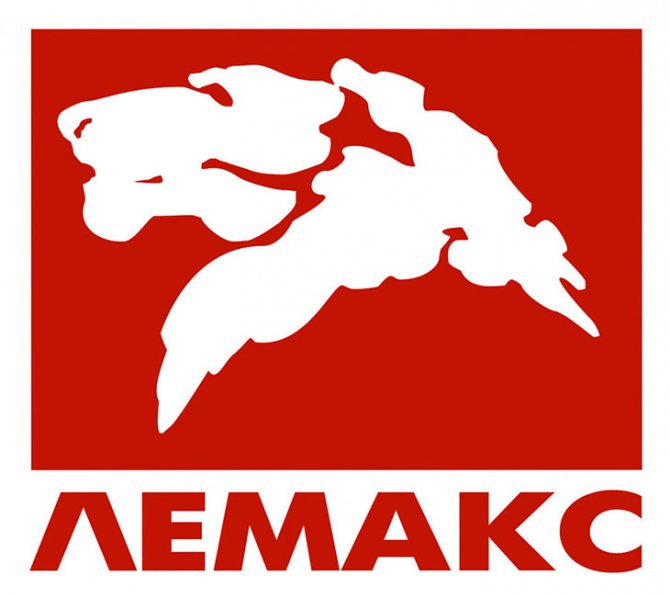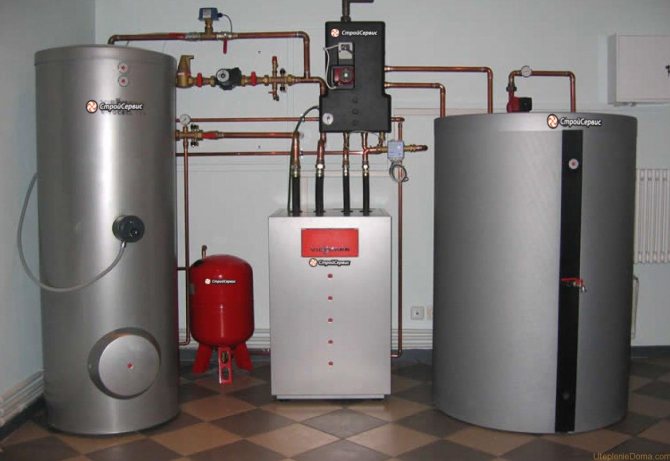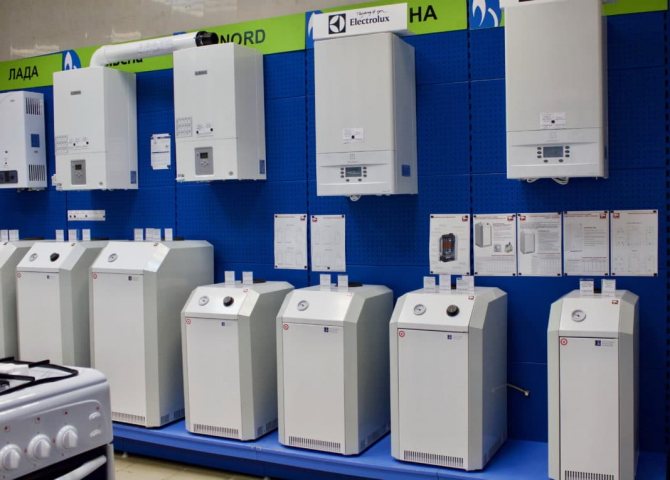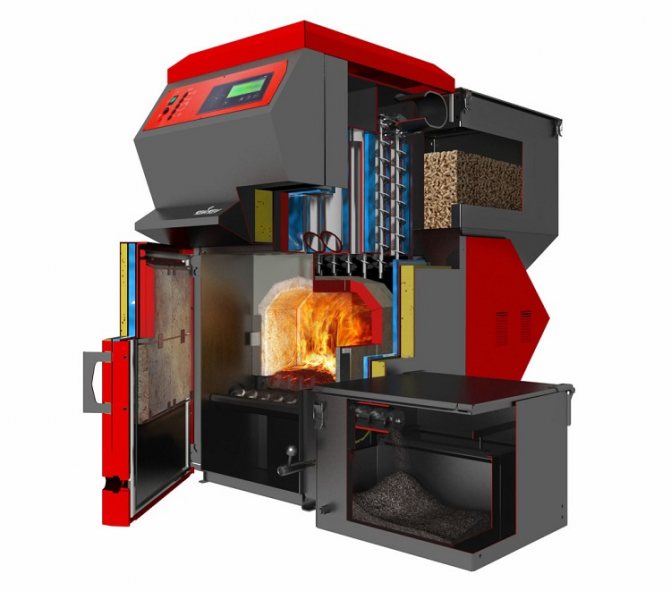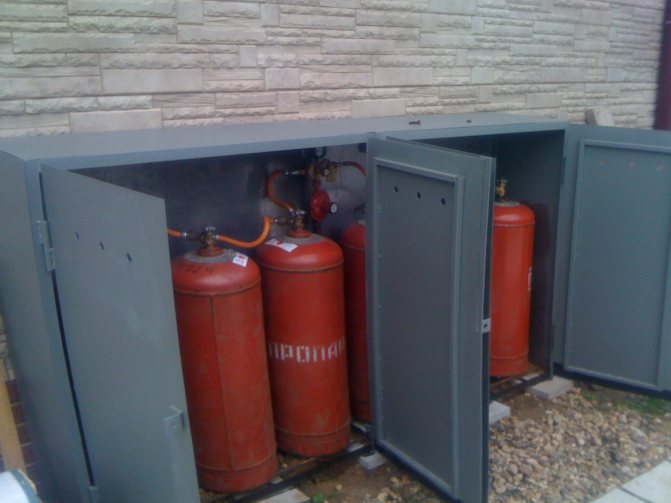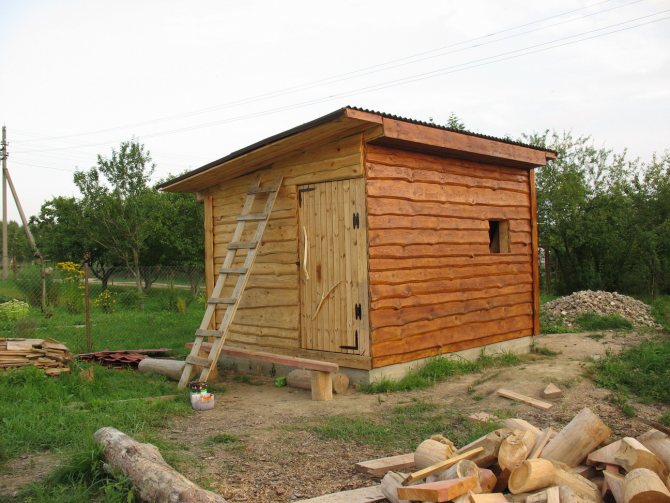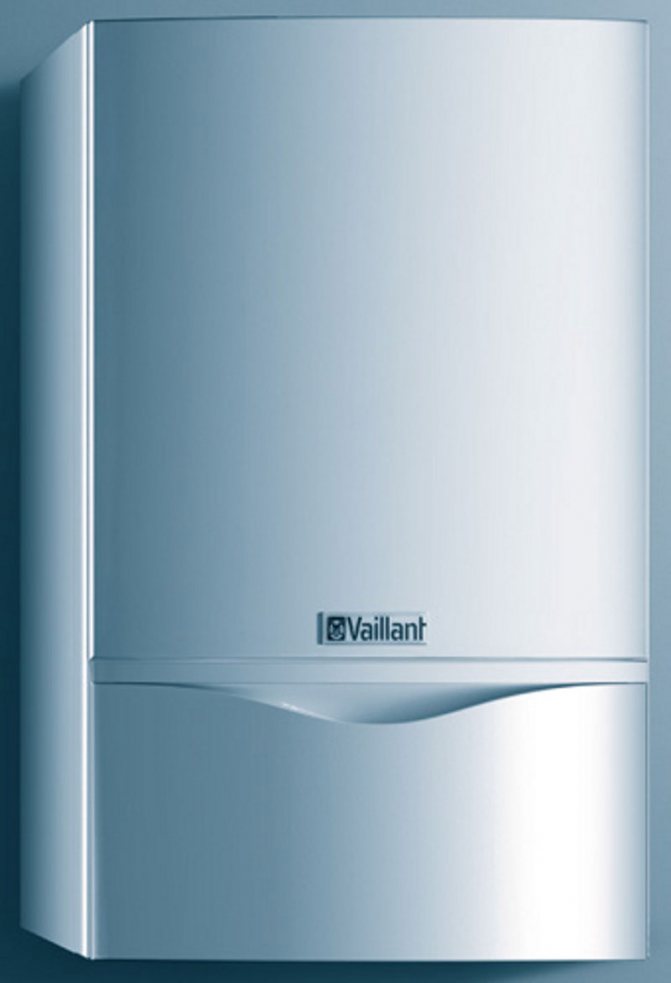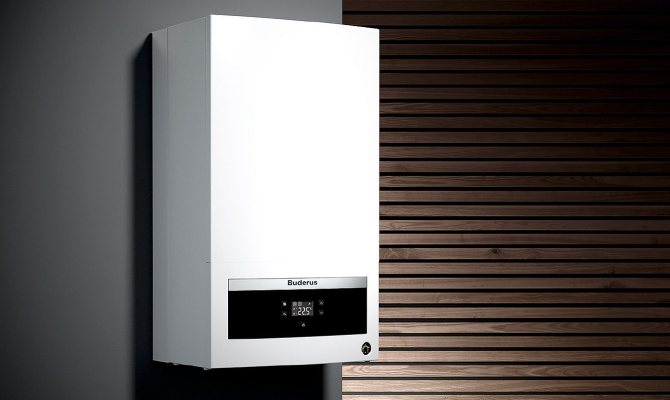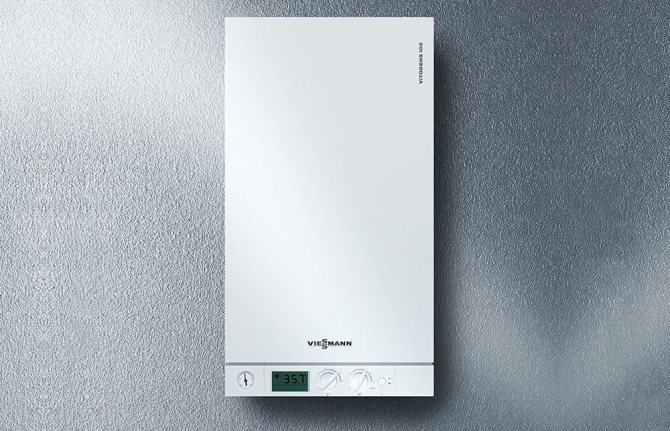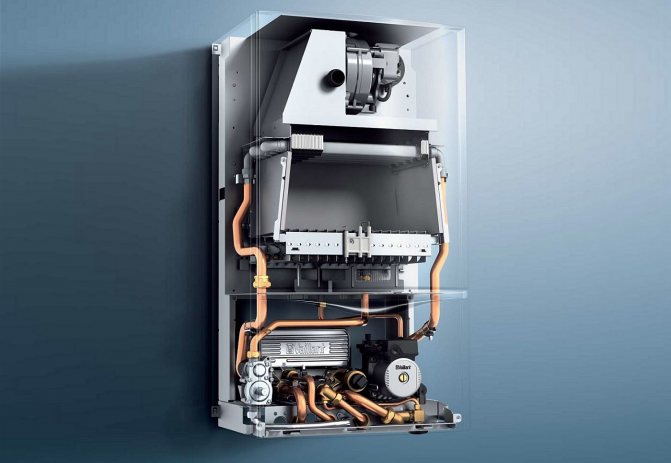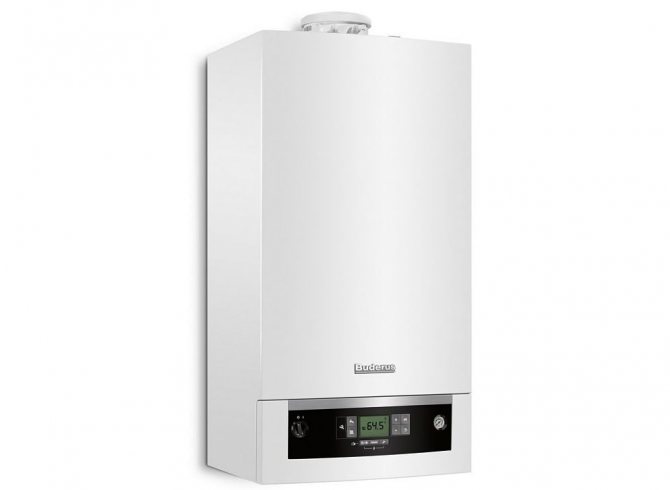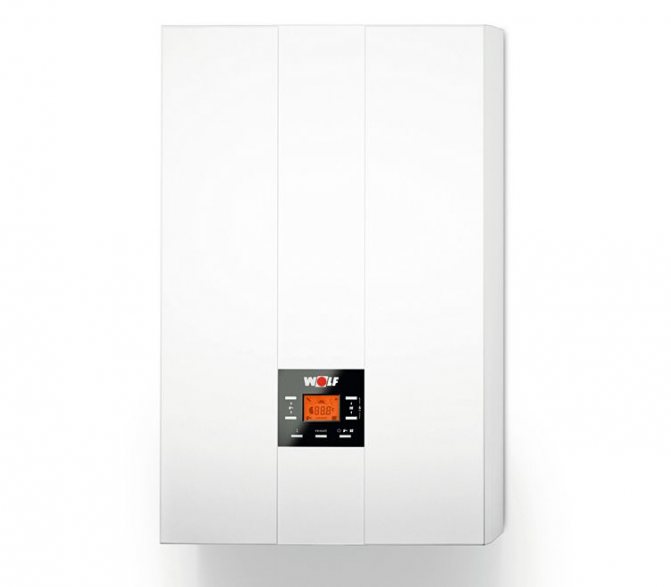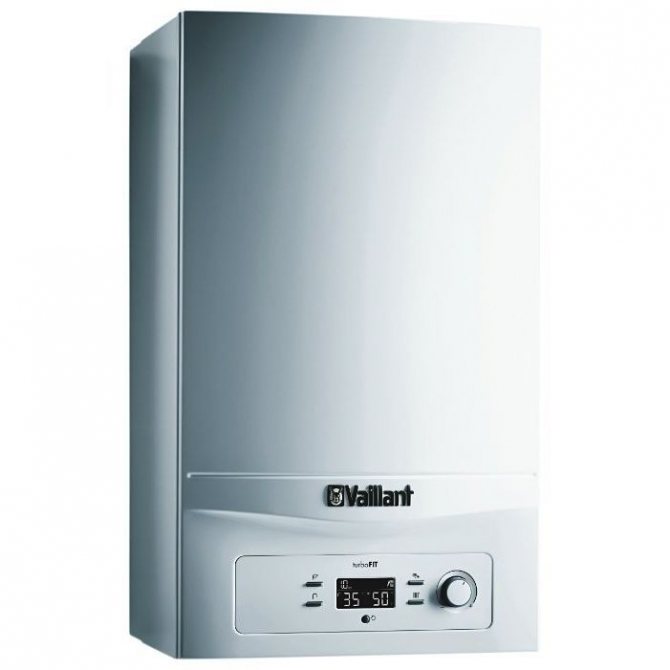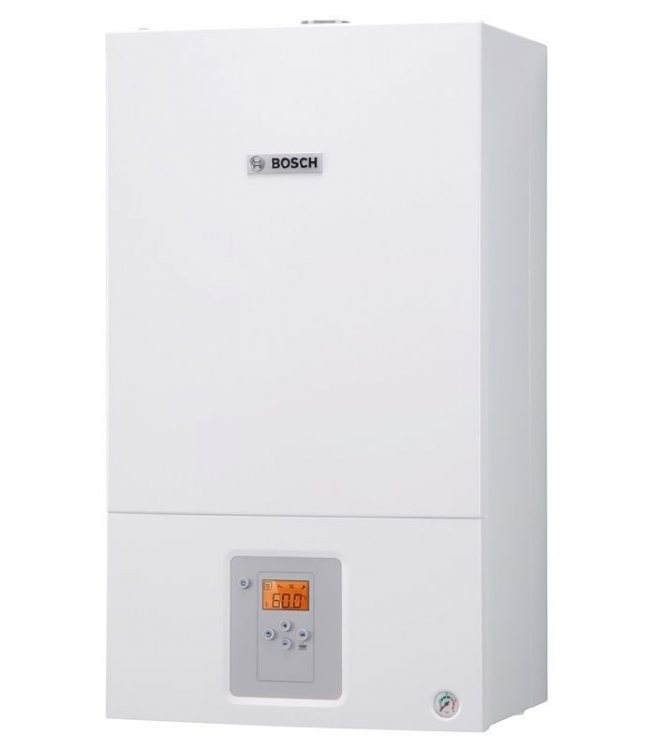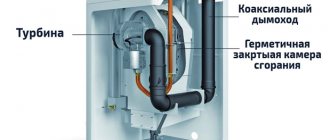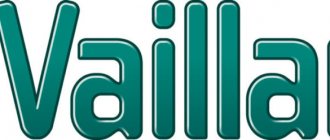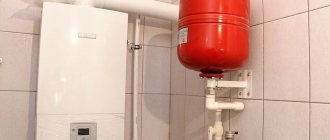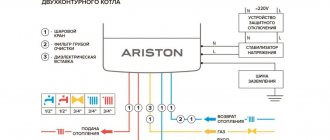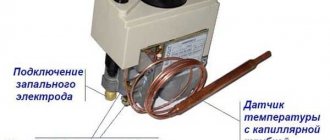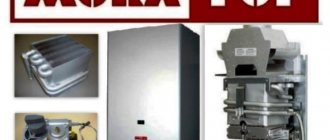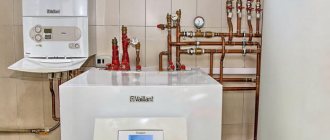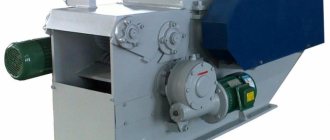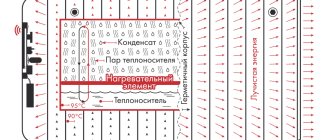German heating boilers of the best brands
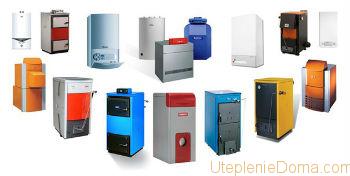
First of all, when choosing heating systems and equipment for them, you need to decide what tasks you set for this technique. You should choose according to the following criteria:
- type of allocation;
- power;
- fuel type;
- number of circuits (double-circuit or single-circuit).
All variants can be found in the range of German manufacturers. It depends on the tasks you set which brand is better to give preference to. The leaders of our time are: Vaillant, Buderus, Viessmann, Wolf, Bosch. Each of the brands is worthy of your attention. The Russian man in the street has the opportunity to choose the option that is optimal for their conditions, whether it be German electric heating boilers, gas, liquid fuel or solid fuel.
The advantages of the Viessmann models
For those who value German quality and want to buy a boiler from a German manufacturer, it is worth recommending paying attention to Viessmann products. This manufacturer offers customers a huge range of products. Gas boilers are available, designed for both small rooms or houses, as well as powerful units capable of providing heating and hot water to even large areas, providing a sufficient volume of heated water for almost any purpose.
Distinctive features of models from Viessmann can be called not only compactness, but also the absence of noise during operation, which is why they are in demand. And this brand gained popularity for its gas boilers, which are also distinguished by high performance, excellent efficiency indicators (this brand received superiority over competitors for the technology, thanks to which a constant water temperature is maintained in the working system).
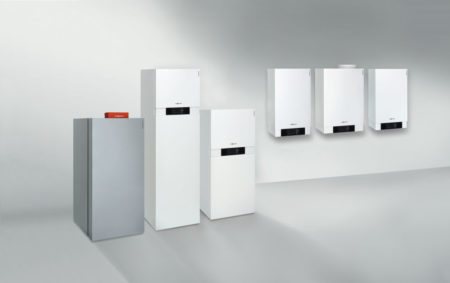

Viessmann assortment
The products of this manufacturer are equipped with a large number of sensors and high-precision electronics, due to which any failure will be identified in advance, and the diagnostic system will be able to tell the user at what level the failure occurred. At the same time, such solutions make double-circuit and single-circuit boilers for heating from this manufacturer completely safe.
If we talk about floor-standing models, then, in comparison with heating boilers from other manufacturers, Viessman offers relatively small devices with a modest weight, so that such boilers can be placed even in small rooms (of course, subject to all safety standards and requirements).
German gas heating boilers from the Viessmann company
The demand for the brand's products is evidenced by its one and a half billion annual turnover in euros. If you are considering heating equipment from the Viessmann brand as an option, you have to choose from two types of installation: floor and wall. The advantages that distinguish the German Wisman gas heating boilers:
- guaranteed possibility of their long-term operation;
- ergonomic design;
- quiet work.
Due to the special technical characteristics of Dornit-2, it can be underground without changing its qualities for a very long time.
For the production of crumb, special foam crushers are used, which can even be made at home.
They are functional and have high performance with significant savings in fuel resources. The Vitopend's wall-mounted versions are gas powered. Vitorond provides heating with liquid fuels. Vitogas is a floor-standing gas version.
Wolf boilers
Wolf gas appliances are interesting in that, having the simplest control, they allow you to create your own microclimate in each room.This makes life in the home more enjoyable and fuel consumption lower.


Several systems of this brand are presented on the Russian market, but the most popular among consumers are models with a conventional efficiency of 110%. This is achieved by using an integrated heat of combustion.
Summing up
Of course, these brands do not exhaust the list of German heating equipment. If you are not constrained in funds, then buying a gas boiler made in Germany will be the best option.
Concluding this review, we can say that by purchasing a heater from Germany, you are investing in reliable, economical and high-quality equipment that will work in your home for decades.
The warmth given by Bosch
German gas double-circuit boilers from Bosch are the option that does not need recommendations. Their main advantages:
- compactness;
- modern design;
- high performance.
There are many options for how to make a do-it-yourself firebox using different materials and sketches.
Gravitational or natural circulation of water in the heating system is possible only if the circuit is correctly installed.
Bosch boilers are suitable for heating areas up to 300 sq. m. It is important to note the high level of gas savings. The design of Bosch equipment allows it to be operated for a long time.
Types and possibilities of wall-mounted boilers
By functionality, boilers can be divided into:
- Single-circuit, feeding the heating system;
- Double-circuit feeding heating and hot water supply systems.
By design:
- Open type with natural draft. Require good ventilation and connection to the chimney to remove combustion products;
- With a closed combustion chamber - forced draft is used. They can be installed in any house or apartment. The intake and discharge of gases takes place through a coaxial chimney.
In terms of efficiency and completeness of gas use, boilers are:
- Traditional, using the heat of combustion of fuel;
- Condensing, using additionally the heat of condensation of vapors in the system.
Boiler automation allows start-up and shutdown under specified conditions, and shutdown in emergency modes.
German heating boilers from Buderus
Buderus and Bosch merged in 2004. After the merger, the Buderus quality became even more attractive. The brand offers equipment that runs on various types of fuel:
- gas;
- diesel;
- solid fuel;
- combined;
- liquid fuel;
- electricity.
The big plus of Buderus boilers is their ability to use two types of energy. The first is from burning the main fuel (firewood). The second is from the burning of pyrolysis gas, which is released from firewood.
This property ensures the environmentally friendly operation of the equipment and its high energy consumption. Buderus saves on heating costs. Your expenses for the purchase and installation of equipment quickly pay off. In this case, you choose German solid fuel boilers, electric, gas, etc. at its best.
Having decided to purchase Buderus equipment, along with excellent quality you get the opportunity to choose from a large assortment not only in terms of fuel, but also in terms of construction and design.
The largest "boilers" of the Great Patriotic War
A "cauldron" in military jargon is a territory with military formations, the front line around which is closed by the enemy. Let us recall the largest "cauldrons" of the Great Patriotic War, in which hundreds of thousands of servicemen were surrounded.
Kiev "boiler"
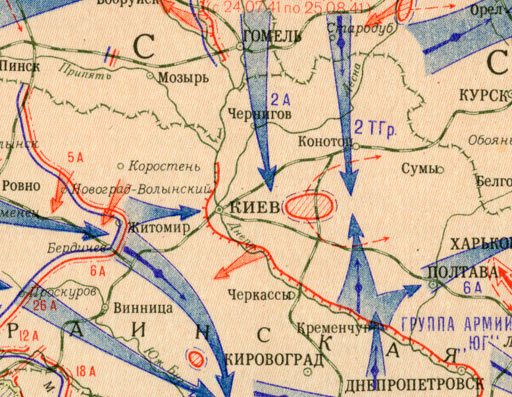

The number of encircled Soviet troops: about 650 thousand. In the encirclement organized by the Germans, an entire front - South-West - was lost. Four armies were completely destroyed (5th, 21st, 26th, 37th), 38th and 40th armies were partially defeated.
Analysis of the documents suggests that the encirclement of the Southwestern Front was an improvisation of the German command.It is believed that due to the turn of Guderian's tank group to the south of the Moscow direction, the Wehrmacht lost time to capture Moscow. A month before the surrender of Kiev, on August 18, 1941, the chief of the General Staff of the German Ground Forces, Franz Halder, presented to Adolf Hitler a plan for striking Moscow through Bryansk with the forces of Army Group Center. However, Hitler rejected this idea, and on August 21 signed a directive, which said: "The most important task before winter is not the capture of Moscow, but the capture of Crimea, industrial and coal regions on the Donets River and blocking the Russian oil supply routes from the Caucasus." The German command decided to encircle and defeat the troops of the Southwestern Front with flank attacks. This operation was a classic "cannes" with a holding force in the center and two shock fists on the flanks.
Stalin did not want to leave Kiev until the last moment, although he was warned about the need to leave the city on July 29. On September 14, 1941, the tanks of Generals Heinrich von Kleist and Heinz Guderian met in the Luben area. Already on September 15, 1941, a gigantic ring around the 5th, 21st, 26th and 37th Soviet armies was closed.
Lieutenant Vasily Petrov, who became twice Hero of the Soviet Union and Lieutenant General of Artillery, left memories of the Kiev cauldron: “Supply has ceased. The motors were stalled. Tanks, vehicles, guns stopped. Countless columns were burning on the roads, and thousands, tens of thousands of people wandered past in a crowd. No one set them tasks, did not rush them, did not set a deadline. They are on their own. If you want - go, if you want - stay in the village, in the courtyard that you liked. The encirclement ring was shrinking every day. "
Vyazemsky boiler
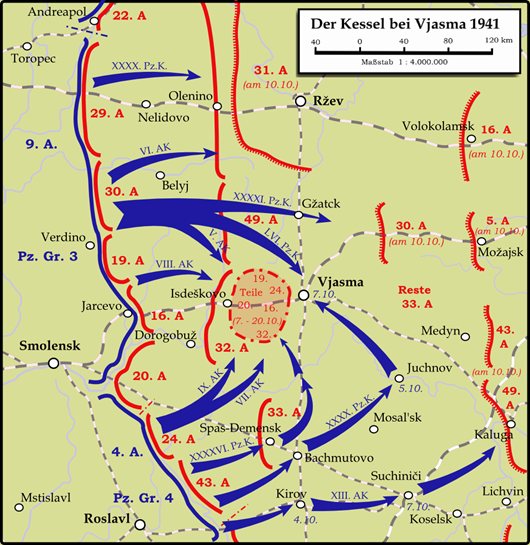

The number of the surrounded Soviet troops: about 600 thousand people. After the end of the Battle of Smolensk and the Kiev operation, the Soviet command was expecting a massive attack on Moscow in the direction of the Minsk-Moscow highway. Therefore, large forces of the Reserve and Western Fronts were concentrated here.
In the early autumn of 1941, the German command decided to launch Operation Typhoon in order to capture Moscow before the onset of thaw and winter cold. Significant forces of the Wehrmacht were concentrated in one sector of the front. 78 divisions were involved in the operation. On October 7, the tank formations of the Wehrmacht of the 3rd and 4th tank groups managed to connect and close the ring at Vyazma. In the German encirclement were the troops of the 16th, 19th, 20th, 24th, 32nd armies, the group of General Ivan Boldin, as well as part of the forces of the 30th, 33rd and 43rd armies.
From 7 to 12 October 1941, the Red Army made attempts to break out of the encirclement, but most of the units and formations did not manage to break through the German "pincers". When the 20th Army tried to break through from the encirclement, about 5 divisions were killed in the battle. The 20th Army as a combat-ready unit ceased to exist, and the commander, General Philip Ershakov, was captured.
Parts of the 24th Army were also unable to break through the encirclement, the commander Konstantin Rakutin was killed. The troops under the command of Lieutenant General Mikhail Lukin, operating in the area north of Vyazma (the 19th and 32nd armies and the group of General Boldin), were preparing to break through the enemy ring in the direction of Bogoroditskoye. It began on October 11 at 16 o'clock. The breakthrough was made, but our troops failed to secure and strengthen the flanks. The Germans very quickly closed the encirclement again, only insignificant forces managed to get out of the cauldron.
Minsk-Bialystok boiler
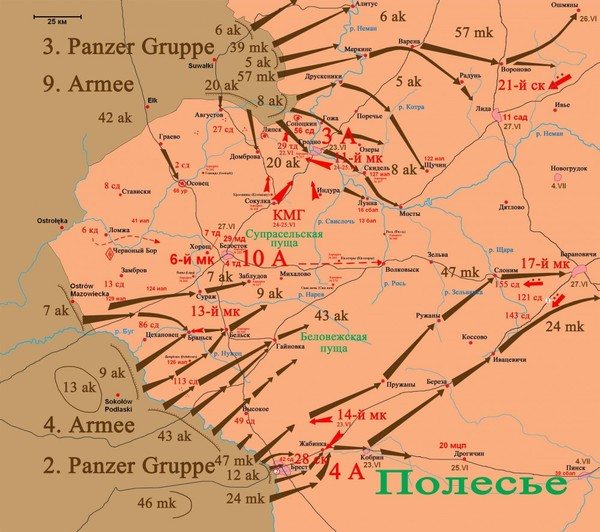

The number of Soviet troops encircled west of Minsk: about 300 thousand. The plan of the Wehrmacht command was to strike with strong flank groupings with a relatively weak one, which was the favorite tactic of the Wehrmacht throughout the 1941 campaign. The tasks of the Luftwaffe included the defeat of Soviet aviation in the very first days of the war and the conquest of complete air supremacy. The Germans managed to realize all these plans.During the offensive in converging directions from June 22, 1941. from Brest and Grodno to Minsk, the Wehrmacht inflicted a heavy defeat on the Soviet Western Front, captured a significant part of Belarus and advanced to a depth of over 300 km. In total, 11 rifle, 2 cavalry, 6 tank and 4 motorized divisions were destroyed in the Minsk-Bialystok cauldron, 3 corps corps and 2 division commanders were killed, 2 corps commanders and 6 division commanders were captured, another 1 corps commander and 2 division commanders were missing. Marshal Kulik with difficulty made his way to his own, dressed in civilian clothes.
The Soviet high command inadequately assessed the situation, did not have a stable connection with the troops, and in directive No. 3 of 06/22/1941 signed by the People's Commissar of Defense Timoshenko and Chief of General Staff Zhukov, they demanded that the Western Front inflict powerful counterattacks and reach the Polish cities of Suwalki and Lublin.
In a German photo: one of the collection points for Soviet prisoners of war
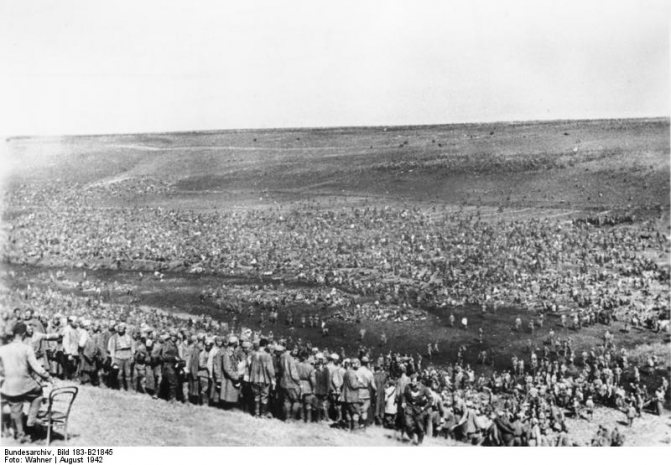

Smolensk boiler
The number of surrounded Soviet troops: about 250 thousand. In the northern sector on July 11, 1941, the German 39th motorized corps, breaking the resistance of the 19th army in the Vitebsk region, launched an offensive on Demidov, Dukhovshchina and Smolensk. On July 13, he reached Demidov and Velizh, occupied Dukhovshchina, entered the battle for Yartsevo, and on July 15 broke through to the Smolensk-Moscow highway. Under Dukhovshchina, the management of the 25th Rifle Corps was defeated, and the corps commander, Major General S.M. Chestokhvalov, was captured.
The commander of the German 3rd Panzer Group, Colonel-General Goth, recalled: “On 15 July it became clear that the exit of the 39th Panzer Corps to the highway east of Smolensk had led to great success. The troops of several enemy divisions, mixed among themselves, were drawn to Smolensk and to the north of it. Beginning on July 15, those enemy units that counterattacked the troops of the northern wing of the 2nd tank group on July 14, near Orsha, began to withdraw to this area. On July 15, aerial reconnaissance reported that the section of the Orsha-Smolensk highway was clogged with transport, which was moving in four or five columns towards Smolensk ... "
In the southern sector, Guderian's 2nd Panzer Group, crossing the Dnieper south and north of Mogilev, occupied Orsha and, bypassing Mogilev in two wedges, advanced in the direction of Smolensk. On July 16, the 29th motorized division broke into Smolensk, where stubborn battles began with the defenders of the city. On July 19, the enemy's 10th Panzer Division advanced southeast of Smolensk and occupied Yelnya. Thus, in the Smolensk area, large forces of the Western Front (second strategic echelon) were surrounded by operational encirclement: 16th Army (M.F. Lukin), 19th Army (I.S.Konev) and 20th Army (P A. Kurochkin).
On July 21, the Supreme Command Headquarters made an attempt to conduct a counteroffensive in order to unblock the troops encircled in the Smolensk region. Five operational groups, formed from the new 29th, 30th, 24th and 28th armies of the Reserve Front, were involved in the counterattacks. However, the counteroffensive failed, and five divisions from Kachalov's operational group near Roslavl were themselves surrounded and suffered heavy losses. The command of the Western Front was unable to ensure the interaction of the unblocking groups with each other and with the armies surrounded in the Smolensk region. The approach of German infantry divisions from near Minsk turned the tide of the battle, and on July 28, 1941, the last Soviet troops left Smolensk. On August 4-5, the remnants of the Soviet troops emerged from the encirclement.
Stalingrad cauldron
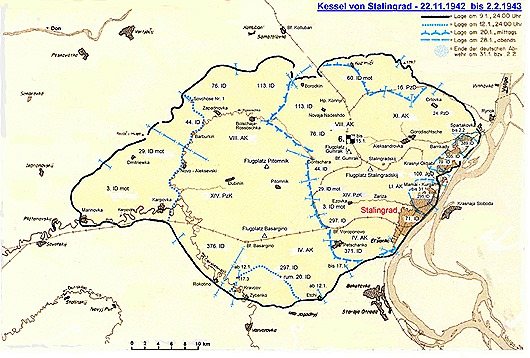

The number of German troops surrounded: about 300 thousand On November 19, 1942, the troops of the Stalingrad and Don fronts went on the offensive. A few days later, they closed the encirclement around 22 divisions of the 4th Panzer and 6th Field Armies of the Wehrmacht.
The offensive of the troops of the Southwestern and Right Wing of the Don Fronts began on the morning of November 19 after a powerful artillery barrage. Troops of the 5th Panzer Army broke through the defenses of the 3rd Romanian Army.German units located behind the Romanian troops tried to stop the Soviet troops with a strong counterattack, but this attempt was not successful: they were defeated by V.V.Butkov's 1st Tank Corps and A.G. Rodina's 26th Tank Corps, which were put into action. The advance units of these corps reached the operational depth, moving into the Kalach area. On November 20, the strike group of the Stalingrad Front went over to the offensive. On the morning of November 23, the advance units of the 26th Panzer Corps captured Kalach. On November 23, the troops of the 4th Tank Corps (A.G. Kravchenko) of the Southwestern Front and the 4th Mechanized Corps (V.T.Volsky) of the Stalingrad Front met in the area of the Sovetsky farm, closing the encirclement of the Stalingrad enemy grouping in the Volga interfluve and Don. The 6th and the main forces of the 4th Panzer Armies - 22 divisions and 160 separate units with a total strength of 330 thousand people - were surrounded. By the same time, a large part of the outer front of the encirclement had been created, the distance of which from the inner one was 40-100 km.
By early 1943, Paulus' 6th Army was a pitiful sight. On January 8, the Soviet military command addressed the marshal with an ultimatum: if he did not surrender by 10 o'clock the next day, all Germans in the "cauldron" would be destroyed. Paulus did not react to the ultimatum. Already on January 31, he was taken prisoner.
German General Kurt von Tipelskirch in his book "History of the Second World War" assesses the defeat at Stalingrad as follows: “The result of the offensive was amazing: one German and three allied armies were destroyed, three other German armies suffered heavy losses. At least fifty German and Allied divisions no longer existed. The remaining losses totaled another twenty-five divisions. A large number of equipment was lost - tanks, self-propelled guns, light and heavy artillery and heavy infantry weapons. The losses in equipment were, of course, much greater than those of the enemy. Losses in personnel were to be considered very heavy, especially since the enemy, even if he suffered serious losses, nevertheless had much larger manpower reserves. Germany's prestige in the eyes of its allies was greatly shaken. Since an irreparable defeat was also inflicted in North Africa at the same time, the hope for a common victory was dashed. The morale of the Russians has risen high "
Captured Germans at Stalingrad
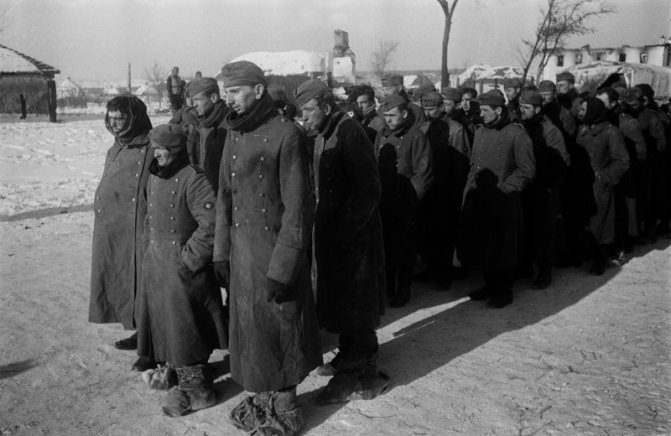

Of the smaller "boilers", the following can be recalled. In July-August 1941. the "cauldron" got the troops of the 6th, 12th Soviet armies and the 2nd mechanized corps near Uman, with a total strength of about 120 thousand people. They managed to break out about 10%.
In September-October 1941. Guderian's tank group managed to encircle 2 Soviet armies in the Bryansk region, but the Germans did not have enough strength to hold the ring. Almost all Soviet troops fought their way out of the encirclement.
Tens of thousands of Red Army soldiers were captured in the Berdyansk "cauldron" in the fall of 1941.
In winter-spring 1942. Soviet troops managed to drive 5 German divisions into the Demyansk cauldron, but after long and fierce battles, the Germans managed to unblock this grouping.
During Operation Bagration, Soviet troops in June-July 1944. surrounded a Wehrmacht grouping of about 100 thousand people in the Minsk region. Almost all of them either died or were captured.
In the winter of 1944. 2 German corps were killed in the Korsun-Shevchenkovsky "cauldron".
Widely demanded German heating boilers Vaillant
Keeps up with its fellow countrymen-competitors and] Vaillant [/ anchor]. Its market share in the segment is 27%. At home, the brand name is associated with a guarantee of impeccable quality. The most popular product is Vaillant atmoTEC. These are single-circuit boilers in various configurations.
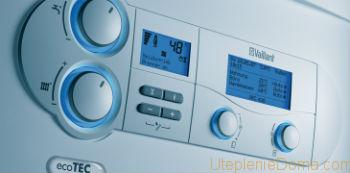

Another Vaillant turboTEC model features forced draft. This boiler is good because it makes it possible to change settings in a wide range of functions. Vaillant iroVIT runs on liquid fuels.Its advantage is in the built-in diagnostic system. Vaillant iroVIT can function both as a heating boiler and as a heat generator for water heating equipment. The Vaillant line is characterized by such advantages as:
- range of heated areas from 60 to 1500 sq. m;
- power from 12 to 150 kW.
The exception to the rule is the Vaillant GP, which has a power of 191 kW.
Heating equipment from the manufacturer Wolf
Wolf is represented on the market by such popular models as:
- Wolf CGB;
- Wolf CGU;
- Wolf CHU;
- Wolf CNK.
The range includes wall and floor options. The main elements of heating boilers are made of high quality cast iron, which allows them to operate for decades. The vast majority of models are equipped with atmospheric gas burners.
Whether you need German gas heating boilers, double-circuit or single-circuit, are you planning to be heated with liquid or solid fuel, you need to make a decision about buying one or another model carefully. It is best to consult with experts.
Vaillant heat generators
Since the company, unlike previous firms, specializes in a wide range of products for heating and ventilation, it manufactures only gas boiler plants. However, as practice shows, Vaillant boilers are in no way inferior to other eminent brands, they are of high quality, reliable and efficient. The list contains both conventional and condensing units, and the power range of the latter reaches 288 kW for floor-standing versions, and for wall-mounted versions - 120 kW.
Conventional wall-hung boilers with a steel heat exchanger are produced with a capacity of 20-36 kW both with atmospheric burners and with a turbo burner. The line includes heat generators with the function of heating water for hot water supply of two types: double-circuit with a steel heat exchanger and with a storage tank. Floor standing boilers with a cast iron heat exchanger can be purchased with a capacity of 25 to 56 kW
Connection and setup instructions
After delivery of the boiler, it is necessary to install it in a pre-selected and prepared place. Do not hang the units on plasterboard or other weak partitions, the wall must have sufficient bearing capacity.
After hanging, the chimney is connected and the gas and water supply pipelines and the heating circuit are connected.
The Viessmann double-circuit boilers are set up after installation and a complete check of the quality and tightness of the connections.
Particular attention is paid to the connections of gas pipes, checking them with soapy water... The gas and water pressure limits are set, the operating mode, current temperature and other parameters are set.
It must be borne in mind that all units undergo initial adjustment at the factory, therefore, in most cases, no specific actions are taken.
All work on connecting and setting up the boiler must be carried out by a qualified representative of the service center. Unauthorized intervention may cause damage to the unit.
Download instruction
Download the instruction for the Viessmann double-circuit gas boiler.
The best German manufacturers and models: characteristics and prices
Vaillant
One of the best German boilers for heating a private house due to its reference reliability, thoughtful engineering solutions and compact dimensions. Wilant boilers are not too whimsical to operating conditions, unlike other German counterparts. In most cases, they are operated without problems for 8-9 years, many cases of operation for more than 12 years with only a few maintenance procedures, instead of the recommended annual.
But, in comparison with analogs, they work louder (albeit almost silently), there are few competent specialists in the regional service network, and it is more difficult to acquire new components in the event of a breakdown.
Model Vaillant turboFIT VUW 242 / 5-2.
The most common model is the Vaillant turboFIT VUW 242 / 5-2 wall-mounted double-circuit boiler with a closed combustion chamber.It has one of the highest efficiency among analogues - 93.5% with a thermal power of 23.7 kW. It is possible to adjust the heat output within the range of 30-100% of the maximum power.
The boiler has one of the lowest gas consumption rates - 2.66 cubic meters. m / h, equipped with a built-in circulation pump, a closed expansion tank and a system of forced removal of combustion products, which makes it more resistant to low ambient temperatures and freezing of the chimney. Model cost - 38-45 thousand rubles.
In terms of reliability combined with high technical characteristics, only some of its other successful models can compete with the manufacturer: turboTEC pro VUW 242 / 5-3, atmoTEC pro VUW 240 / 5-3 or atmoVIT VK INT 324 / 1-5.
In practice, of the few problems with Vaillant boilers, the most common error is F75, which usually occurs due to poor-quality, insufficiently dense coolant or untimely scheduled maintenance of the expansion tank. Also, as we have already mentioned, a significant drawback is the low quality of service.
VIESSMANN (Visman)
The brand is one of the leading heating equipment in the world market, has been operating since 1917. Gas boilers of the VIESSMANN brand are distinguished by their quiet, almost silent operation, ease of operation, they quickly heat the heating agent of the heating circuit, and are able to maintain a stable temperature of the second circuit intended for hot water supply (DHW).
In more than 90% of cases, Wisman boilers operate for more than 8-10 years absolutely without any malfunctions. In Russia, there are service centers specializing in boilers of this brand.
Model VIESSMANN Vitopend 100-W A1HB.
The most popular model is the VIESSMANN Vitopend 100-W gas convection double-circuit wall-mounted boiler, which is distinguished by a relatively low cost, quiet operation and ease of control. Depending on the configuration, the efficiency reaches 92.8%, there are also single-circuit versions. Thermal power - 12-34 kW, which is enough to heat a house with an area of 100-300 m2.
A common problem of Vitopend 100 models, according to the practice and reviews of the owners, is the boiler shutdown due to freezing of the chimney, this happens at a temperature of -17-18 ° C and below. Error F5 appears on the display - problems with the release of gases into the atmosphere. The solution is to design a chimney according to the manufacturer's requirements or a special chimney (complex) against icing. The cost of the boiler, depending on the configuration, is 35-50 thousand rubles.
Model VIESMANN Vitogas 100-F.
Of the floor standing boilers, the VIESMANN Vitogas 100-F model stands out, which is distinguished by optimal efficiency of 92%, durability of operation, and economical fuel consumption. Gas consumption in the weakest configuration with a capacity of 29 kW - 3.94 cubic meters. m / hour. Boilers of this series are designed for heating large private houses (from 300 to 600, using the unit for heating small houses will be irrational and expensive. Cost - 120-230 thousand rubles.
Buderus (Buderus)
The manufacturer stands out with a slightly more affordable cost among the main German-made boiler units for most models (usually 10-15% cheaper).
Wall-mounted boilers have an efficiency of 92%, and for floor-standing boilers the indicator reaches 93%, they economically consume gas. The noise level is insignificant - no more than 40 dB. In general, there are few differences from the previous two manufacturers, boilers under the Buderus brand are also known for their reliability, but not so long ago the manufacturer moved the assembly of units to Russia, Engels, slightly losing its quality.
Buderus Logamax U072-24K model.
The best-selling model is the Buderus Logamax U072-24K (or a similar 12 kW model), which is distinguished by good efficiency and quietness, convenient and functional control, aesthetic design and compact dimensions. The main advantage over analogues is price - 28-30 thousand rubles.
However, there are also disadvantages in the form of a plastic make-up valve, which can be broken over time, vulnerability to voltage surges, as a result of which the electronic board fails (it is recommended to install a voltage stabilizer: about 3-4 thousand rubles). Like other models, when frosts are -18 ° C and below, the boiler automation knocks out an error and stops the operation of the boiler, in which case it is recommended to improve the chimney.
Wolf
Less well-known, but already proven in the domestic market, is a German manufacturer. Differs in the same German quality, efficiency and safety. Among the disadvantages is the even higher cost of gas boilers.
Wolf FGB-35 model.
The most common model is the Wolf FGB-35 (or 25 kW version). The boiler is known for its efficiency and economy: the efficiency is 109% (due to the condensation principle of operation) with a gas consumption of 4.06 cubic meters. m / hour.
High-performance pump, die-cast aluminum heat exchanger and fan for forced exhaust of flue gases ensure class A according to the environmental directive ErP. But the cost is about 100-115 thousand rubles combined with the lack of a competent service system (with the exception of Moscow and Moscow region) does not allow the model to be the best in the class.
Bosch Thermotechnik GmbH
Bosch-branded equipment has long been known as high-quality, easy-to-use, thought out to the smallest detail. Bosch boilers are no exception, which are known primarily for the build quality, some of the best controls that allow you to simply but accurately adjust the operation of the unit, as well as excellent design that does not spoil the interior of the kitchen - all this at a relatively affordable cost.
However, the disadvantage is the reliability that is inferior to other German competitors, since in practice the frequency of breakdowns of boilers of this brand is higher. Also, boilers are difficult to install and initial setup.
Bosch Gaz 6000 W WBN 6000-24 model.
The brand is characterized by a wall-mounted gas boiler Bosch Gaz 6000 W WBN 6000-24 C or a floor-standing Gaz 2500 F30, which has a remote control function. The models work quietly (almost silent smooth ignition), have high efficiency and many precise adjustments. The cost is about 30,000 rubles for a wall model and 45,000 rubles for a floor model.
But as practice shows, if you are going to buy a German boiler, it is better to choose a model from the time-tested three manufacturers: Viessmann, Vaillant or Buderus.

